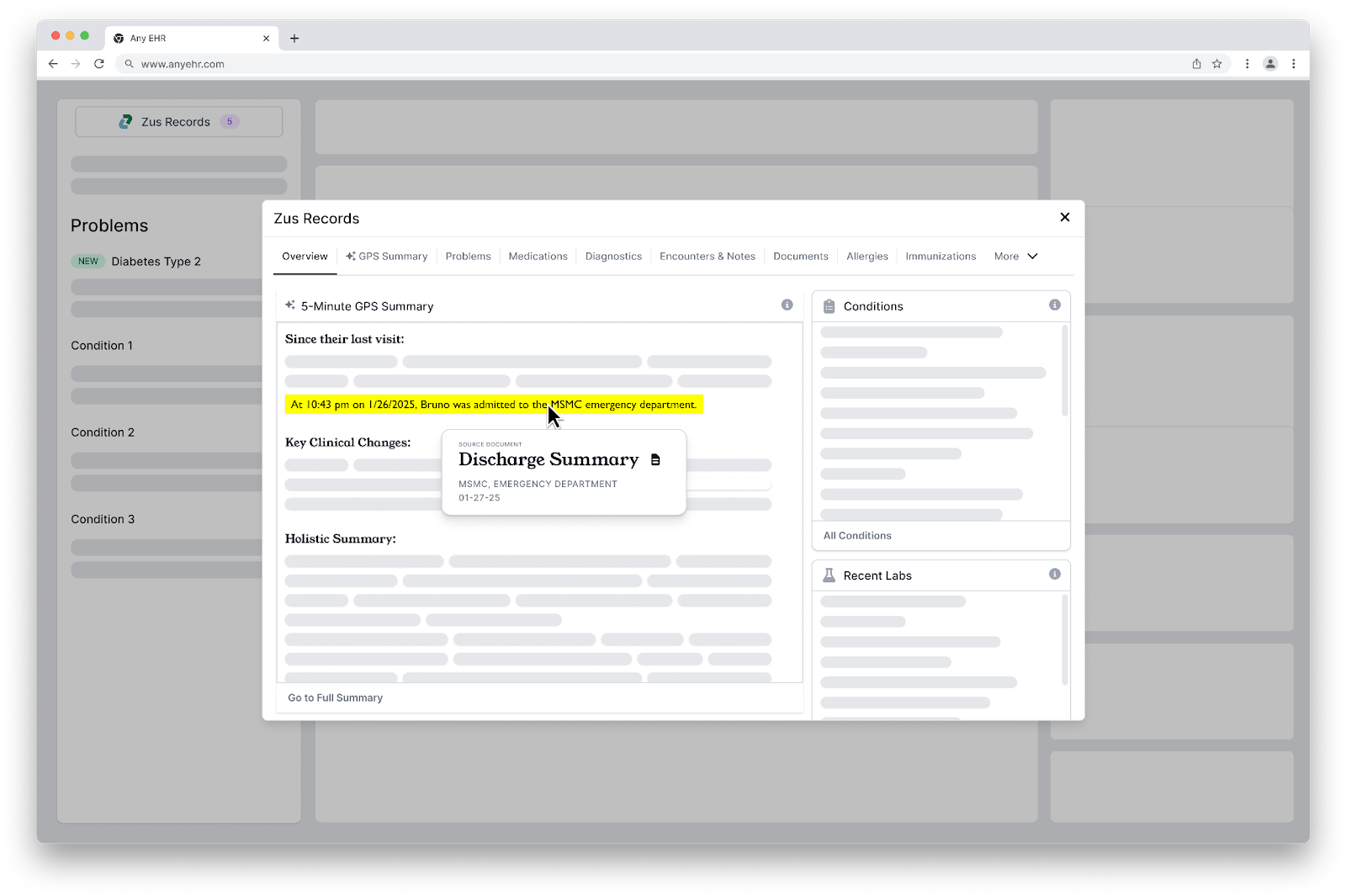For years, healthcare has faced a data problem. Patient information is scattered across different systems, often incomplete, outdated, or buried in unstructured formats. Clinicians waste valuable time hunting for critical insights, administrative burdens grow, and ultimately care suffers.
At Zus we’ve been solving this challenge by transforming disconnected healthcare data into a unified, structured, and actionable patient record. The Zus Aggregated Profile (ZAP) provides an always-on, longitudinal patient view ensuring enriched, real-time insights follow patients wherever they receive care. This has allowed providers to cut through the noise and make better-informed decisions at the point of care.
Through our vast network of clinical, pharmacy, lab, and claims data sources, ZAP continuously surfaces the most relevant updates—whether it’s a missed medication refill, a recent hospital admission, or a newly available lab result. But even with better data accessibility, the sheer volume and complexity of patient information remain a challenge.
But we’re only just beginning. Today, I’m excited to talk about the next frontier for Zus Health: how we’ve laid the groundwork to harness the power of AI to further transform the mess of healthcare data into actionable insights and improve outcomes for our partners.
Making Clinical Data Instantly Understandable with AI
One of the biggest obstacles in healthcare today is the overwhelming amount of patient data. The Generated Patient Summary (GPS) accelerates decision-making by distilling the most critical patient information into a clear, concise summary.

Embedded directly alongside the ZAP overview, GPS provides clinicians with a clear, structured view of a patient’s history, problems, medications, and unstructured clinical notes—tailored to their specific care model. Early adopters have used GPS to accelerate visit prep, saving time by surfacing key insights and linking directly to source data. And because trust is foundational, every summarized point includes direct links to the patient’s record ensuring transparency and confidence in the insights provided.
As we continue developing GPS, we’re working on customizable summary formats and deeper workflow integration, allowing care teams to adjust the length and depth of each summary to match their specific workflow needs.
Uncovering Hidden Risk for Smarter Care
Looking ahead, Zus is investing in AI to tackle another critical challenge: identifying hidden risk factors that could impact care.
AI-powered risk analysis can scan medications, labs, vitals, and clinical factors to detect previously undocumented conditions. Data trapped in PDFs and images offers further potential. Care teams will be able to proactively manage at-risk patients while feeling confident that recommendations are well-supported.
Transforming Healthcare, One Insight at a Time
With these innovations clinical data is becoming more useful, actionable, and intuitive than ever before. By turning fragmented information into clear insights and surfacing key risk factors in real time, providers can spend less time piecing together patient histories and more time delivering meaningful care.
And our customers are already seeing the impact. As Ben Hall, SVP Product + Technology Officer at Author Health, put it: “Zus is the ‘easy button’ for integrating actionable data into workflows.”
But we’re just getting started. As healthcare continues to evolve so will we—building smarter, more efficient tools that give providers the right information at the right time to improve patient outcomes.
Interested in learning more?
Want to see these innovations in action? If you’re heading to ViVE, book time here so we can explore how AI-powered insights can transform your workflows. Not attending? No problem—reach out here and share more so we can schedule a demo and discuss how your team can harness the full power of your patient data.
